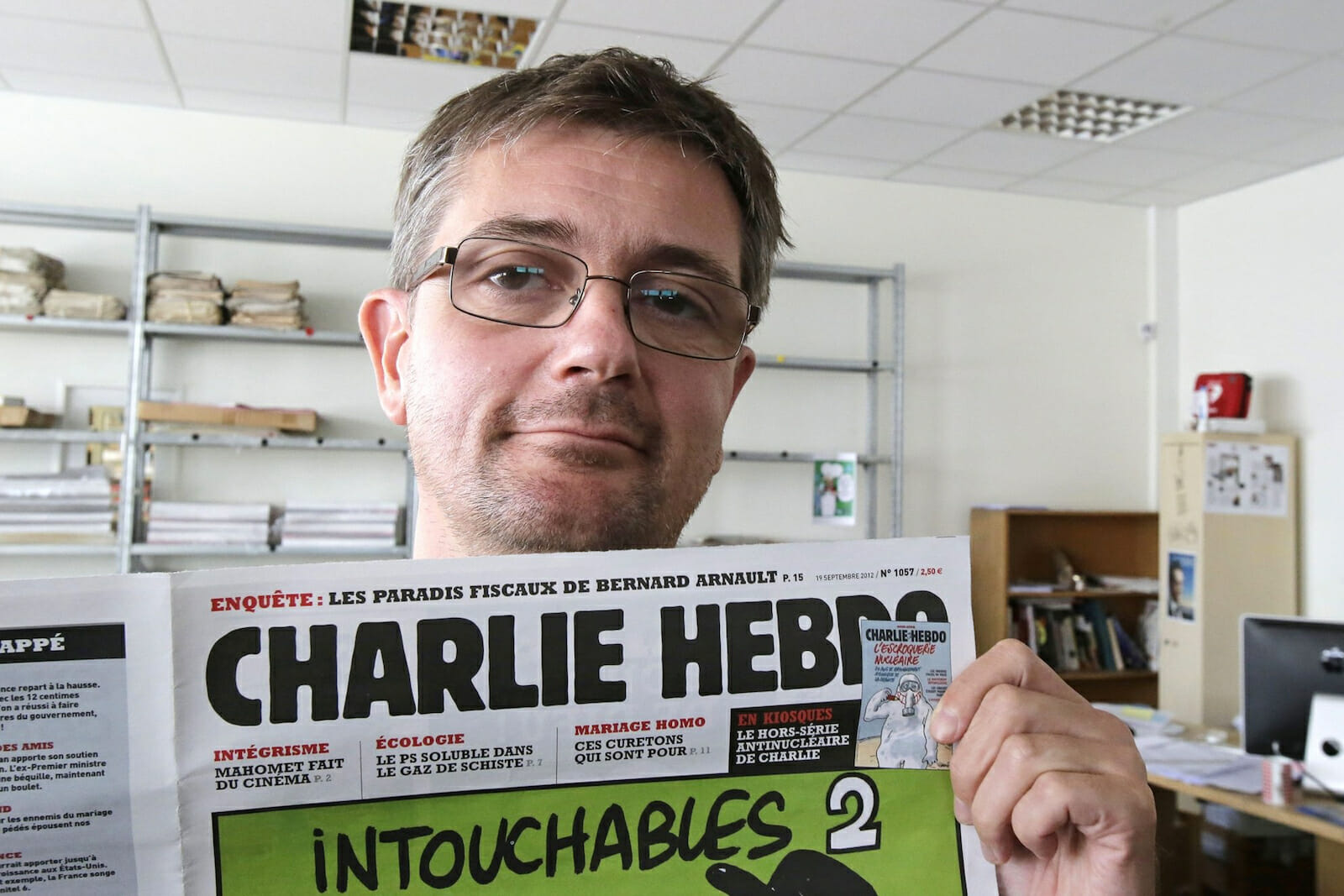
Tech
The Empowerment of the Lone Blogger
A video mocking the Prophet Muhammad, released by an American filmmaker, is instrumental in the death of an American Ambassador in Libya. A cartoon in a French weekly, also mocking Muhammad engenders protests in Kabul and the lockdown of French embassies in 20 countries. The connections between the causes and outcomes seem tenuous – even audacious. Certainly they do not seem proportionate. This should not be surprising.
Causality – linking a cause to an event – is not a balanced equation. The weight of a provocation does not engender an equally proportionate response. What seems to be the immediate cause of an event – and what is most frequently cited as the cause (this often is rigidly categorical) – is often only the trigger factor. For instance, the recent wave of embassy protests should be viewed against the backdrop of a residual anti-Americanism fostered by recent failed occupations of Iraq and Afghanistan and growing friction between Islamic nationalism and western democratic atheism.
The rise in western Islamic intolerance should also be considered against insufficient discrimination between Islamic fundamentalism and Islamic religious practice in western culture. The short termism endemic in popular journalism, with its eagerness for efficient, categorical explanation, means that this type of sensitivity to context is rarely practiced. Protests do not spring out of nowhere: They occur when a trigger appeals to a conducive structural terrain. But the supply of triggers, available for import, has proliferated massively. Let’s be clear. The simultaneous globalisation and liberalisation of content – both production and access – is changing the landscape decisively. Social media, more than any other historical device, has democratized the demand and supply of information.
But its impact, specifically the internal mechanisms that determine which content flares upwards to reach global significance and which stutters and dies, is ambiguous. It is unclear why certain video, images and blogs gain world-wide recognition while others fade into obscurity. Connectedness is one answer but it is not the only one.
Timing is another as well as is complete coincidence. The impact of content delivered at high speeds and located anywhere and everywhere is contingent and not easily reducible – at least yet – to scientific explanation. Tony Blair, speaking in reaction to the death of Chris Stevens, attributes this to globalisation: ‘The forces of globalisation are conflicting with the very powerful forces of reaction, based on a perverted view of religion.” To furnish his point with more detail: High velocity waves of unregulated content from a spectrum of unofficial sources present a lucrative opportunity for dissidents to exploit latent popular sentiment.
Historically, states, movements and actors have used propaganda to control the development of opinions and preferences. Propaganda though has been strictly demarcated from reality: either by controlling what is permissibly viewed (e.g. The Great Firewall of China) or altering realities to show something entirely different (e.g. the doctoring of images in the former Soviet Union). The former function remains coherent and in force but less enforceable in a climate of IT consumerization. The latter function however is being recalibrated and reborn by a steady proliferation of content that can be used, stripped of its original context and localisation, to deliver an often destructive message. What we have seen in the recent waves of protest is niche, provincial, low quality and unofficial content used to provoke and catalyse reaction. Social media decontextualizes, and, in doing so, renders offensive but harmless content into consequential political triggers.
Virtual social networks lack governance. They enable marginalised actors and organisations to extend their influence and allows them to circumvent mediation that should generally occur. They override space-time limitations that traditionally have contained and constrained the spread of information. They include, by broad association, individuals who have little interest in the content but still distribute it willingly. Most damagingly, they enable dissidents who seek content to radicalise latent sentiment into street protest. Ultimately, we are witnessing a revision of the structure of cross-national interaction. This is not only an acceleration and explosion of content but also, and perhaps most significantly, a gradual displacement: Of official sources by unofficial sources, and large scale media organizations by individuals. Social media has empowered the small scale producer whose agility offers him a crucial advantage.
What can, or perhaps more fundamentally, what should be done? First of all, the ability of individuals to submit and access content freely and on a global scale is a positive thing. It equalizes and prevents major news organisations, or any other actor for that matter, from monopolizing the thread and trajectory of a debate. It also regulates: ensuring honesty and transparency. Likewise, it is healthy for governments to express their views and respond critically to on-going debate: this is social government. How recent events have unfolded underscore this point. The anti-American sentiment that swept throughout the Arab world, at least in part, conflated the interests of the US state and one of its most extreme and offensive citizens.
Presented pure and de-contextualised, “The Innocence of the Muslims,” compounded a simmering distrust of the US which could have been appeased with effective government dialogue. Decisive commentary can separate the view of an individual from the formal position of the State, and inform the type of view expressed in The Express Tribune of Pakistan, who quoted a teenager saying, “The United States doesn’t know who they have messed with.”
The problem with social media is that it rewards controversial, atypical and extremist content by equipping it – more often than not – with more traction than balanced equivalents. And anyone, anywhere can find an item of information to validate or exploit an unbalanced viewpoint. Once public opinion begins to swell around an issue, official sources usually have limited ability to puncture such developments. This is not to suggest that governments should have the authority to determine the ebb and flow of debate, but rather that having such actors hamstrung by their inability to move in ‘real time’ can also itself lead to missing checks and balances in the social ecosystem. Speed is the issue here and governments are currently too slow, too laborious and too conscientious.
It is not simply about locating and monitoring such content but crucially, how it is engaged with. Governments, corporations or any large entity are immediately disadvantaged by virtue of their monolithic nature; with so many bureaucratic levels impeding a rapid decision on what’s the ‘official line.’ Furthermore, it is not simply the speed of the response, but the tone which may inhibit effective engagement. Large bodies are often seen as being out of touch and uncaring with their formal, conventional and often stale response to issues – a by-product of not only the aggregation of so many inputs, but the pull of conservatism that is inherent within any actor which carries large reputational risks. While individuals within the social space are able, within obvious limitations, to operate with a very low level of risk; this is just not the case for large organisations. To put it simply, they are operating on an uneven playing field.
If organisations want to have their voice heard within the social space they must begin to de-centralise the engagement process. Divulging responsibility to an individual level not only increases response time but allows humans to interact with humans. Knowing the face behind a response immediately alters the how it is seen, understood and digested, and for most cases, the results are likely to be positive. Of course this is a trend that is already occurring, politicians, CEO’s etc. now have a raft of public profiles which they use to disseminate, debate and recycle information. The teething issues of those that have tried to straddle their own views while concurrently representing the views of a wider body have been clear for all to see; you need not search too far to find a catalogue of politicians who have brought about a furore through their ‘personal’ accounts.
However, one only needs to look to Obama’s utilisation of social media and new technologies to understand the potential it has to transform dialogue between government and the electorate from something static and often irrelevant, to something more sensitive, inclusive and ultimately richer. As Ranjit Mathoda, a lawyer and money manager who blogs at Mathoda.com puts it, “Obama understood that you could use the Web to lower the cost of building a political brand, create a sense of connection and engagement, and dispense with the command and control method to allow people to self-organize and do the work.” The fragmentation of authority is crucial for governments, as well as for any organisation to refurbish their engagement in the social world.
As Michael J. Margo writes in “A Review of Social Media Use in E-Government” the key is to create specific organisational units which can manage newly created e-participation channels. Furthermore, those that manage these new units must move away from a conservative organisational culture – the traditional modus operandi of “law enforcement” and “regulation.” While this may appear daunting for organisations, empowerment at the individual level is critical if large scale bodies are going to be able to contribute in a meaningful way in the fast paced social environment.
The rise of new media exerts a natural impulse for governments and enterprises to rethink their social engagement strategy. Technological change inevitably forces a realignment as organisations bid to mirror the habits of their constituencies. Famous examples are Franklin D Roosevelt’s fire side radio chats, and later JFK’s use of television to communicate to the American people. Social media, with its interactive, ubiquitous, and unforgiving nature, poses this challenge today. Governments need to be ready to project opinions and commentary on where they stand on an accelerating debate or potentially decisive issue.
By relinquishing control of the dialogue and embracing the snap-shot anarchy of social networks, they will also benefit from increased exposure to their citizens. Inaction is not a sustainable option and will only hasten the retreat of governments from social communities. The question they must ask is: Do we want to contribute? Because the conversation will go on with or without them.


